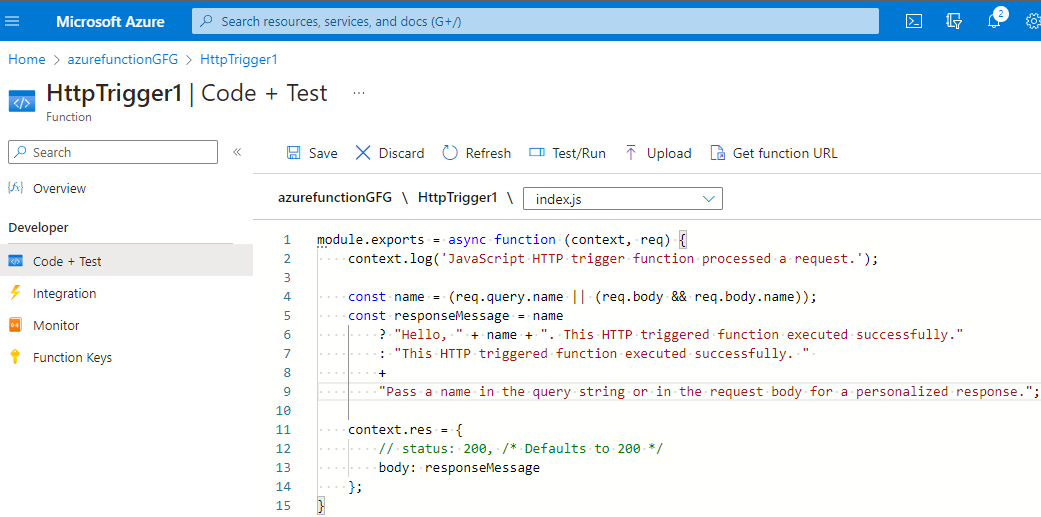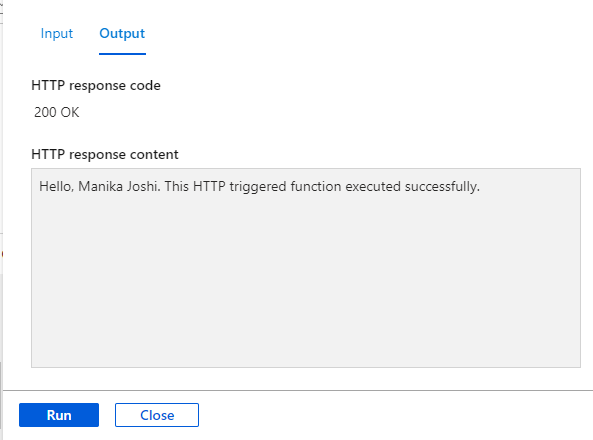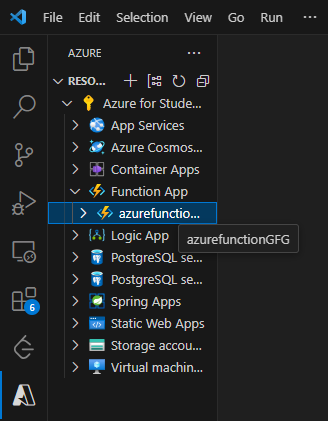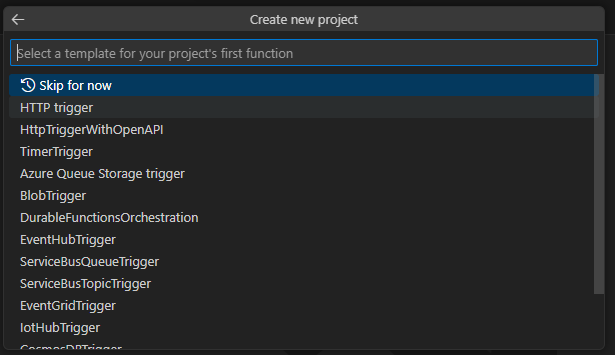Embarking on the journey of serverless computing with Azure Functions unlocks a world of possibilities. Azure Functions, a powerful serverless compute service, allows developers to execute code in response to events without the burden of managing infrastructure. In this guide, we’ll unravel the enchantment of Azure Functions, exploring key concepts, guiding you through practical implementation, and enriching the learning experience with diagrams, screenshots, and real-world examples. Whether you’re a seasoned developer or a curious enthusiast, let’s dive into the realm of serverless applications and discover the artistry of Azure Functions.
Key Components
Before we embark on the deployment journey, let’s familiarize ourselves with key terminologies related to Azure functions and creating serverless applications
Azure Functions
Azure Functions is a serverless computing service that lets you run event-triggered functions without explicitly provisioning or managing infrastructure. Code snippets, termed functions, execute in response to various events, providing an efficient way to build scalable and cost-effective applications.
Serverless Computing
Serverless computing is a cloud computing execution model where cloud providers manage the infrastructure, allowing developers to focus solely on writing code. It doesn’t mean there are no servers; instead, the management is abstracted away, and you pay for the actual execution of functions.
Triggers and Bindings
Triggers define how a function is invoked, while bindings are a declarative way to connect to services, simplifying input and output interactions within functions.
Azure Functions
Azure Functions is a serverless solution that enables the creation of serverless applications, allowing developers to write less code, maintain less infrastructure, and save on costs. It eliminates the need for deploying and managing servers as the cloud infrastructure provides all the necessary resources to keep the application running. Instead, developers can concentrate on writing the code that serves the end-user requests. This is achieved by writing a piece of code that runs when a trigger is initiated, such as an HTTP request, message arriving in a queue, or another event. Azure Functions provide a structured model of serverless programming, where developers only need to write code for their business logic, without worrying about other technical aspects such as maintaining servers, CI/CD, or infrastructure.
Step-by-Step Deployment Process
Step 1: Logging into Azure
First, you need to create an Azure account if you don’t have one already. You can sign up for a free account.
Step 2: Create a function app
Once you have an Azure account, you can create a function app in the Azure portal. A function app is a container for your functions that provides all the necessary infrastructure to run them.
Look for “Function app” in the search bar. Click on “+ Create” button on the top left.


Here, we’ll be creating a function app named- “azurefunctionGFG”. Fill in the following details:
- Subscription: Choose your Azure subscription.
- Resource Group: Create a new or use an existing resource group.
- Runtime Stack: Node.js
- Version: 18 LTS
- Operating System: Choose your system’s operating system (Linux or Windows)
- Region: Choose the appropriate region.

Under the Hosting section, select the Consumption (Serverless) option.

Click on ‘Review+Create’ and wait.
Once the deployment is completed, you’ll get a message like the following:

Step 3: Creating Function
After creating a function app, you can create a new function by 3 options-
a. Create in Azure Portal
b. VS Code Desktop
c. Other editors or CLI

Let’s see how to create functions using both Azure Portal and VS Code.
Creating function through Azure Portal
Click on “Create in Azure portal” to continue. You can choose from a variety of templates to create your function, including HTTP triggers, timers, and more.
Here, we’ll be creating a HTTP trigger and naming our function as “HttpTrigger1”.


Go to our trigger section. The interface includes a “test” tab for quick testing, an “integrate” tab for adding bindings and configurations, a “manage” tab for managing keys and authorizations, and a “monitor” tab to see past function executions. Additionally, there is a host configuration file that controls the behavior of the entire function app. A sample HTTPTrigger function is created to demonstrate the different testing methods available within the interface.

I am asked the HTTP method which will be POST for our case. I am providing my name as a value to the “name” key.

Click on “Run” to hit the trigger.

The HTTP triggered was correctly hit!
Creating function through VS Code
Ensure that you have the Azure extensions installed on your VS Code. Under “Resources” section, we can see the function app we created- azurefunctionGFG under the Function App subsection.
Incase, it’s not visible, try refreshing the resources or relogging in.

In the “Workspaces” section, click on the Function App sign and click on “Create Function”.

Follow the same steps as above to create a HTTP Trigger. Note that this time you’ll have to provide a different name to our HTTP Trigger. We further get a similar sample template that we can run.

FAQs On Azure Functions to Create Serverless Applications
1. What Distinguishes Azure Functions From Traditional Server-Based Applications?
Azure Functions abstracts away server management, allowing developers to focus solely on code. You pay for function execution rather than maintaining infrastructure.
2. Can I Run Azure Functions Locally During Development?
Yes, Azure Functions provides tools for local development and testing, ensuring seamless iteration before deployment.
3. How does Scaling Work in Azure Functions?
Azure Functions scales automatically based on demand. Each function runs independently, enabling efficient scaling without affecting the entire application.
4. Are There Limitations to The Execution Time of Azure Functions?
Yes, each function execution has a maximum timeout, typically a few minutes. Long-running processes may need to be split or managed differently.
5. Can I Integrate Azure Functions with other Azure services?
Absolutely. Azure Functions supports a wide range of bindings, allowing seamless integration with services like Azure Storage, Cosmos DB, and more.
Share your thoughts in the comments
Please Login to comment...